What is the best bathroom flooring? 8 floor types to consider that marry practicality and style
These are the best bathroom flooring styles for a stylish and practical at-home sanctuary

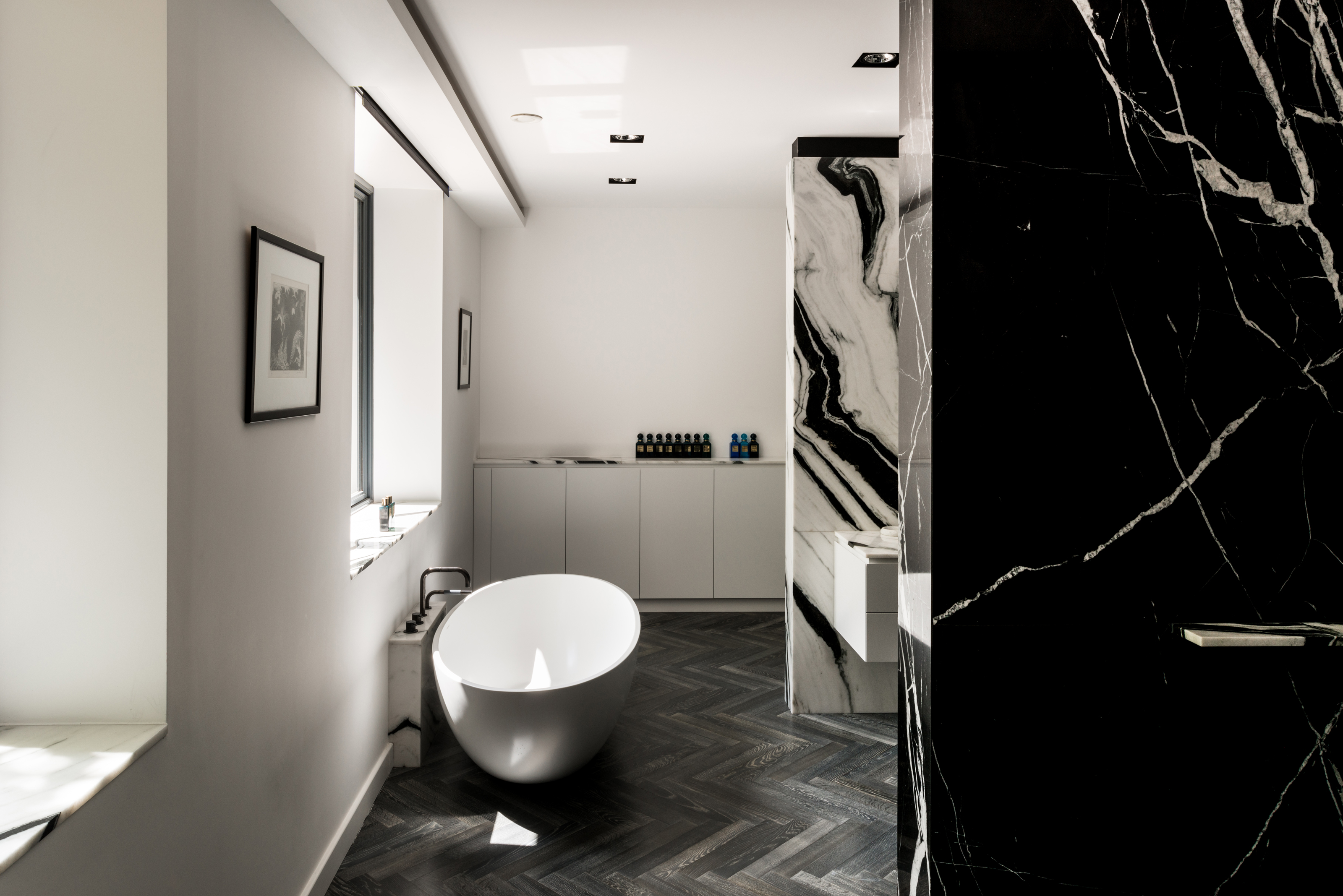
When trying to decide on the best bathroom flooring type, there are myriad factors to take into consideration. You want your bathroom floor to perform well in a room that holds a lot of moisture and water, key obstacles to take into consideration that can quickly ruin the wrong flooring. Another factor to take into account is durability – your bathroom is not a room you do up regularly because of expense, plumbing complexities, so what you decide on must withstand the test of time. A bathroom floor must also be non-slip. Given the amount of moisture and water in the space, it's crucial that your underfloor material has good traction.
Appearance is, of course, also something you want to consider. 'Bathroom design has changed, and it is as much about the aesthetics as it is about the practicalities and functionality of the space,' says Barrie Cutchie of BC Designs.
This is because technology has changed which means you can have it all – a beautiful space that ticks all the practical boxes. 'When it comes to the design style of your bathroom flooring ideas, it is as much about how it fits with the rest of the fittings and your own personal choice,' Barrie adds.
We've rounded up the best flooring choices for a bathroom that straddle good looks and functionality perfectly.
How to pick the best bathroom flooring for your home
First and foremost, think about your lifestyle. This will have an impact on the bathroom floor that suits you. A family bathroom used by young children will require a flooring solution that can deal with excess water and must be slip resistant. An ensuite might require something a bit more sophisticated. So firstly establish your preferences and needs and decide on flooring accordingly.
1. Porcelain tile

A porcelain tile is up there with one of the most popular bathroom flooring solutions. Porcelain is near indestructible, stainproof, and can have a roughened-up finish meaning it is anti-slip.
'Good quality porcelain tiles are perfect for use in wet rooms and walk-in showers,' says Jo Oliver, director at The Stone & Ceramic Warehouse. 'They are impervious to water, making them an ideal solution for everyday use. They won't be damaged by detergents or any of the other chemicals we frequently expose our shower surfaces to.'
The Livingetc newsletters are your inside source for what’s shaping interiors now - and what’s next. Discover trend forecasts, smart style ideas, and curated shopping inspiration that brings design to life. Subscribe today and stay ahead of the curve.
Porcelain tiles can also be manufactured in a range of realistic finishes, recreating the look of anything from wood to concrete. 'Using porcelain tiles means it's possible to achieve the look you want without the challenges and maintenance issues the real materials can bring,' says Jo. Tiles that replicate the look of marble are a good example. Real marble is expensive, but the advancements in technology mean that it can be replicated well on porcelain.
This is a porcelain tiled bathroom floor from interior designer Brad Ramsey. 'We opted to bring interest with the pattern on the floor as a clever small bathroom flooring idea,' says Brad. 'The floor choice is the foundation of the rest of the design selections and sets the tone of a space.'
2. Natural stone
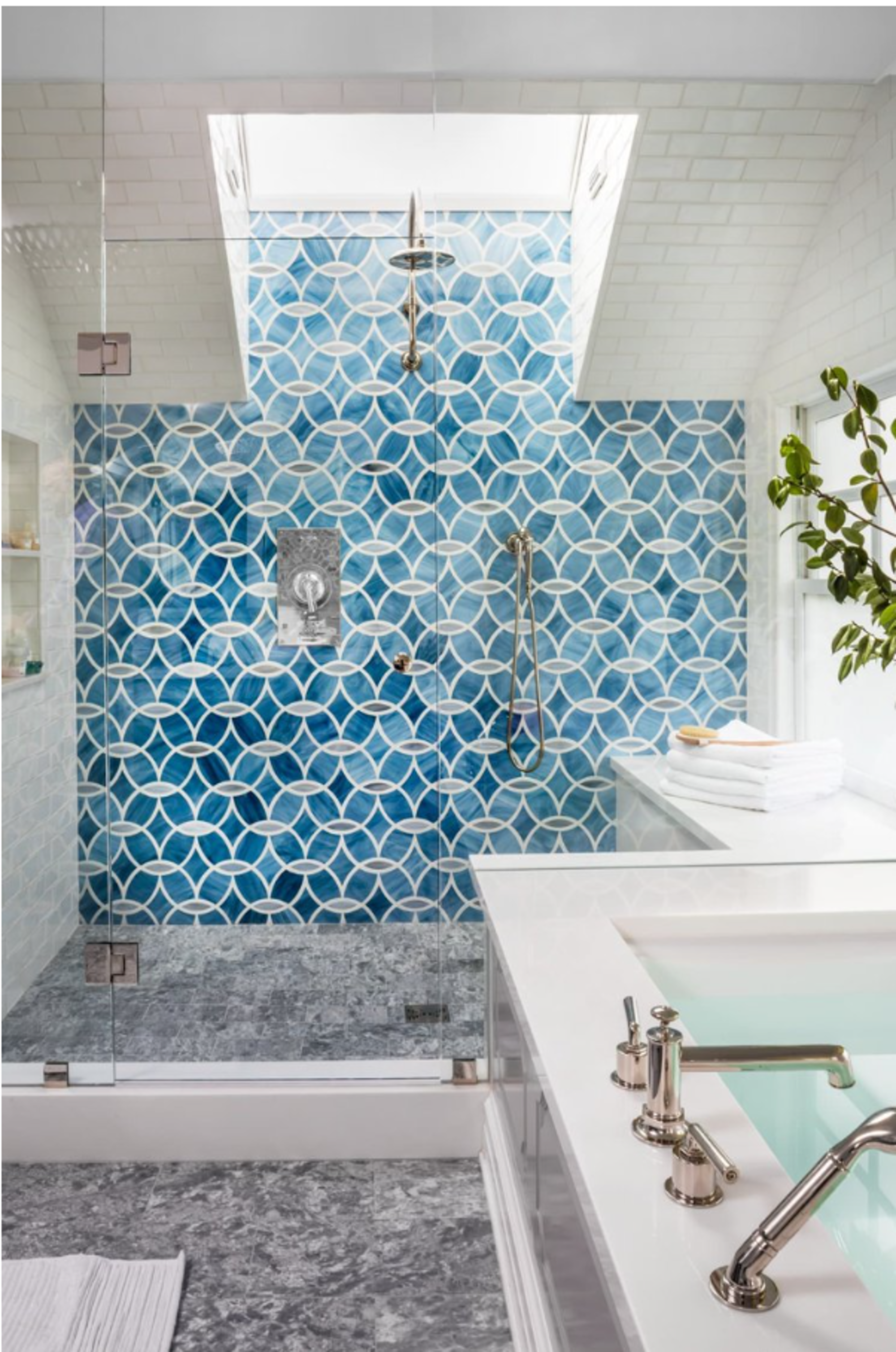
Stone flooring is an option that will always look chic and reinforce the idea that your bathroom is a place dedicated to pampering and sanctuary. Think luxurious marble, granite, both of which are hard, durable and beautiful options.
'We are big fans of a classic natural stone tile in bathrooms - they don’t date and they are easy to maintain and always looks beautiful,' says Julie Kleiner of Massucco Warner.
'Sometimes we use small format or mosaic style natural stone tile, and other times, we use a larger format stone tile, depending on what other tiles we have in the space. In this San Francisco bath, we used an Ann Sacks grey marble called Polar grey on the floor, in a larger format.'
The issue with natural stone is that it can be expensive, but a natural stone is an investment certain to last you a while. Barrie Cutchie, design director of BC Designs warns that stone needs to be looked after carefully. 'Natural stone is porous and so needs to be sealed. It will also require maintenance in order to ensure it remains water-resistant but if you have the time to dedicate to this, it really is beautiful. '
3. Ceramic tile
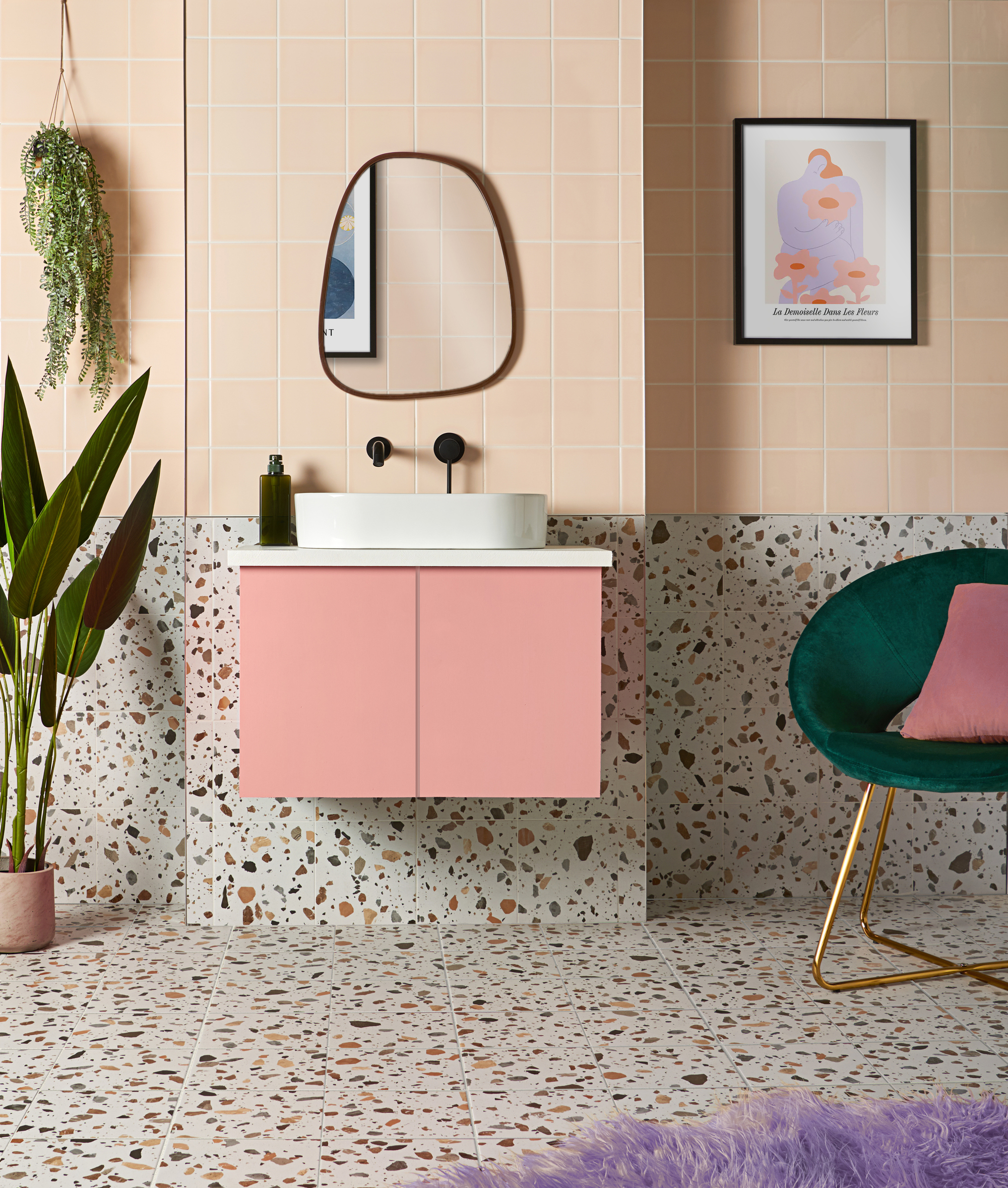
Ceramic tiling is another great option for a bathroom floor. The tiles are stylish when thinking about how to choose a floor color, they are available in an array of shades, shapes, sizes and patterns. But they are also durable and easy to maintain. Ceramic tiles are impervious to water and won't harbor mold or mildew.
When thinking about how to tile your bathroom floor, why not take your ceramic tile up the wall, like in this playful ceramic example featuring a terrazzo look.
If you compare ceramic vs porcelain tiles, the former are much easier to cut and so make the natural choice if you are going to attempt it on your own. 'One of the key considerations to think about is choosing non-slip flooring, as wet floors in bathrooms can be dangerous,' says Barrie. 'Ceramic tiles with a smooth finish will be slippery underfoot, though you can get tiles that have an extra layer of slip resistance which are worth investing in.'
4. Wood effect tiles
'Hardwood is sensitive to water and humidity and will need replacing if it suffers water damage, so it may be best to stay away from this type of flooring,' says Louisa Swannell of Walls and Floors.
However, don't despair. If you love the look of wood but want it to be bathroom-friendly, you can lay a wood-effect tile floor instead. There's a host of high-quality options to choose from, in all shades, so you can pick a finish that perfectly suits your space.
5. Vinyl flooring
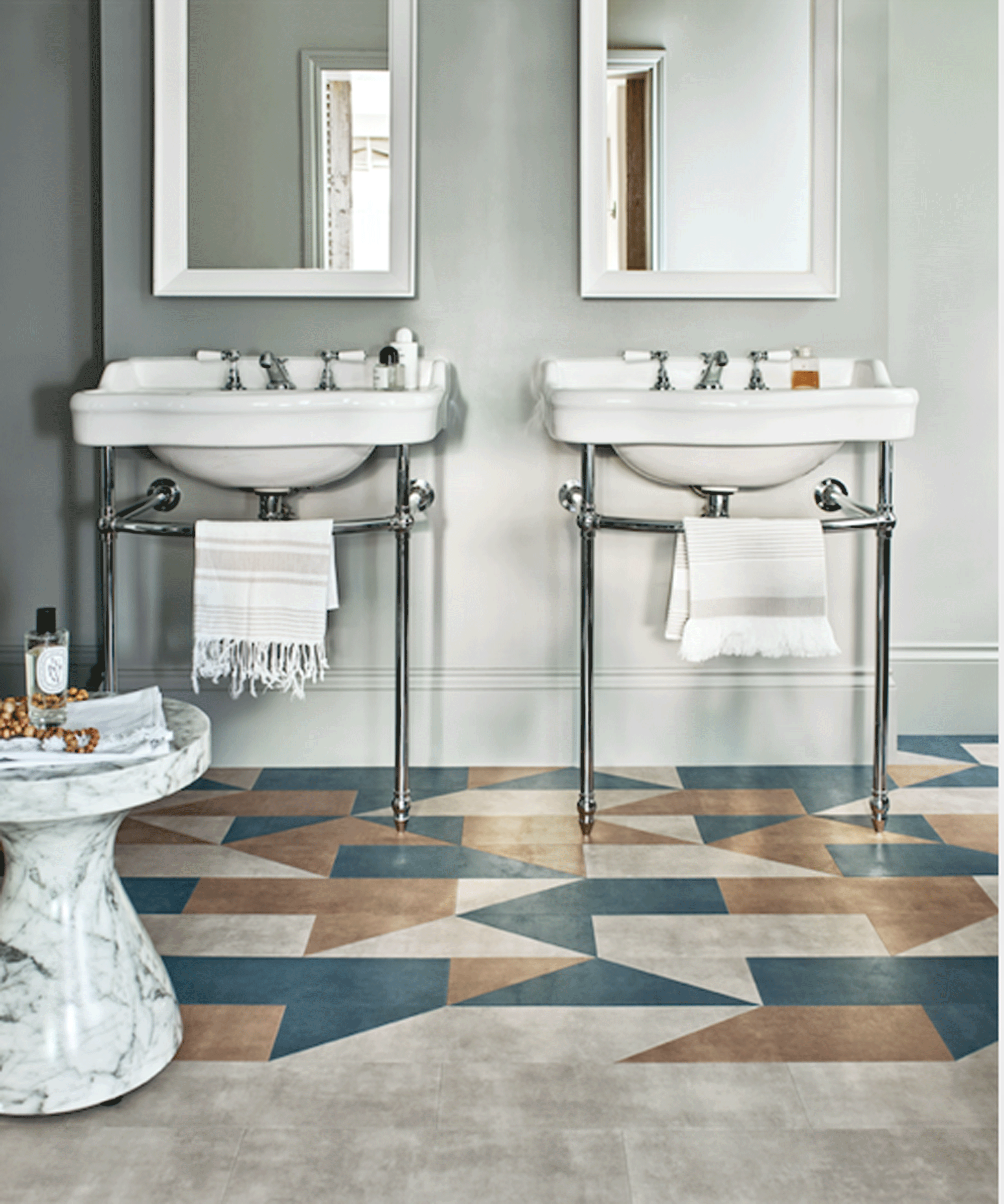
Vinyl bathroom flooring is an option that can look great, is practical and cost efficient, and has been popular on bathroom floors for a while. If you have a family home where your bathroom is going to be exposed to high levels of water from splashing children, sheet vinyl flooring comes in large sizes and can be installed with few seams.
'If you are going to go for this option, luxury plank or tile vinyl is the best option. It can create the look of wood or natural stone because of the cut of shapes but is easy to care for,' says Barrie. 'The cheaper options can wear much quicker and don't always have a realistic finish to them, so invest in it properly.'
Finally, because vinyl has been around for so long, there is a real breadth of gorgeous patterns and designs to pick from, from realistic wood to geometric shapes such as these from Amtico.
6. Microcement
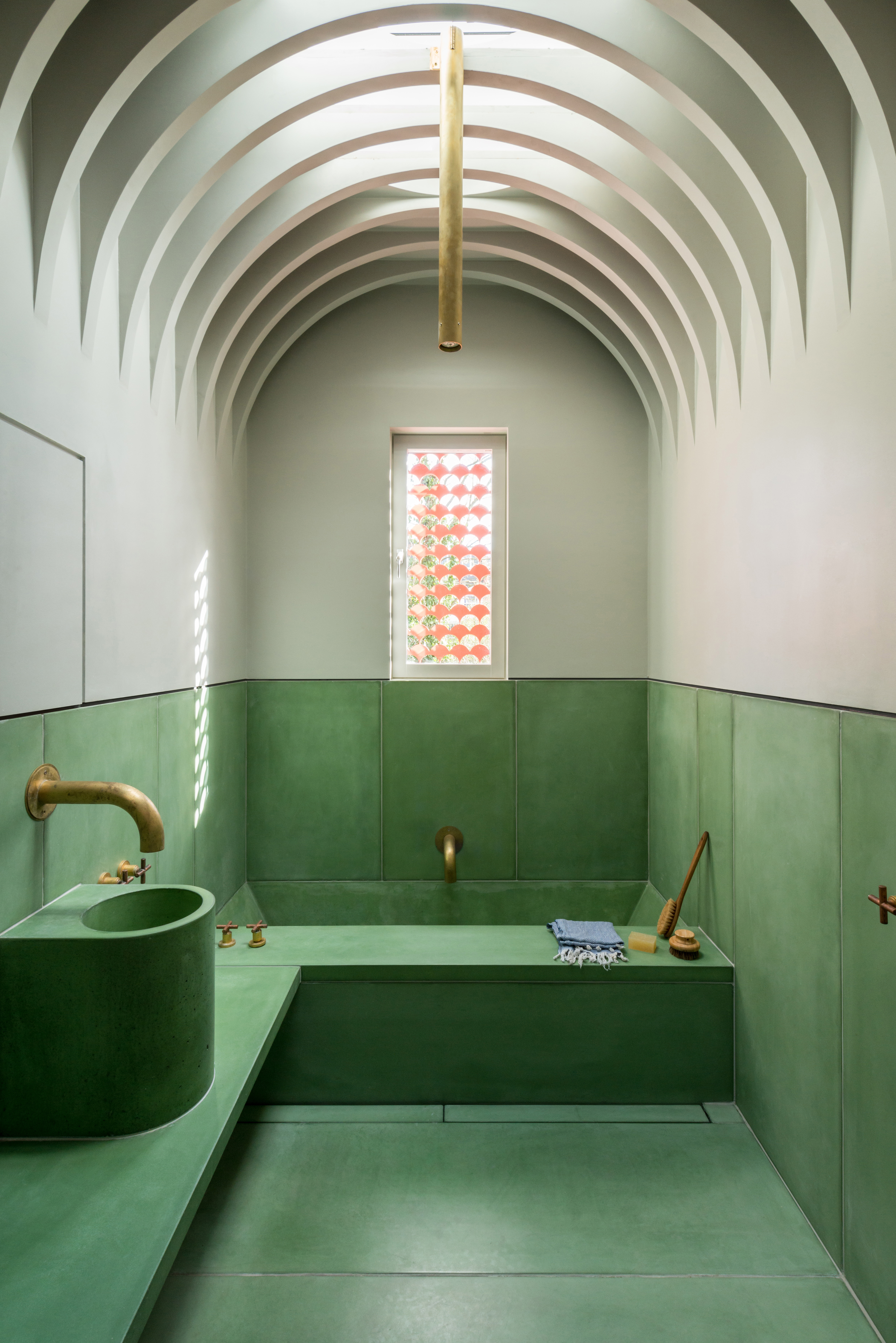
For a more brutalist look, a concrete floor in a bathroom can look sleek, modern and industrial. 'Using concrete in an upstairs bathroom can be tricky as the weight can make it untenable, but a great alternative is microcement,' says Barrie Cutchie. It's an affordable floor to install, durable, waterproof when sealed properly.
'It is a specialist coating that can be applied to any hard surface and replicates the design aesthetics of real concrete for a modern bathroom,' he continues. 'Best of all, it is waterproof and suitable for underfloor heating so makes the perfect alternative to tile design for a walk-in wet room.'
On the negative side, concrete can be susceptible to staining and slippery underfoot if not using a proper sealant.
Like tile, microcement can also get quite cold underfoot, a problem that can be easily solved with the addition of a couple of bathroom floor towels.
However, for a clever way to use concrete over microcement, this bathroom design from Studio Ben Allen uses concrete panels by Concreations rather than poured concrete to create a spa-like design.
7. Large-format tiles

It's not just about the material, think about the shape and sizing of your tiles of choice.
'We've seen a huge increase in the popularity of slab or large format tiles in recent years,' says Jo. 'These large-format designs mean fewer grout lines and less maintenance and cleaning.'
They also are striking and can make small bathroom floors look larger thanks to their seamless appearance. 'For a high-end look, choose the largest tiles possible,' recommends Barrie. 'Using oversized tiles in a bathroom tricks the eye into thinking that the space is much bigger than it really is, so can help to create a sense of scale.'
Large format tiles are also quite realistic in terms of replicating your favorite luxurious material, be it marble or concrete. 'Thanks to their large surface area, large-format tiles also result in a continuous and uninterrupted finish that is realistic,' adds Jo.
8. Limestone
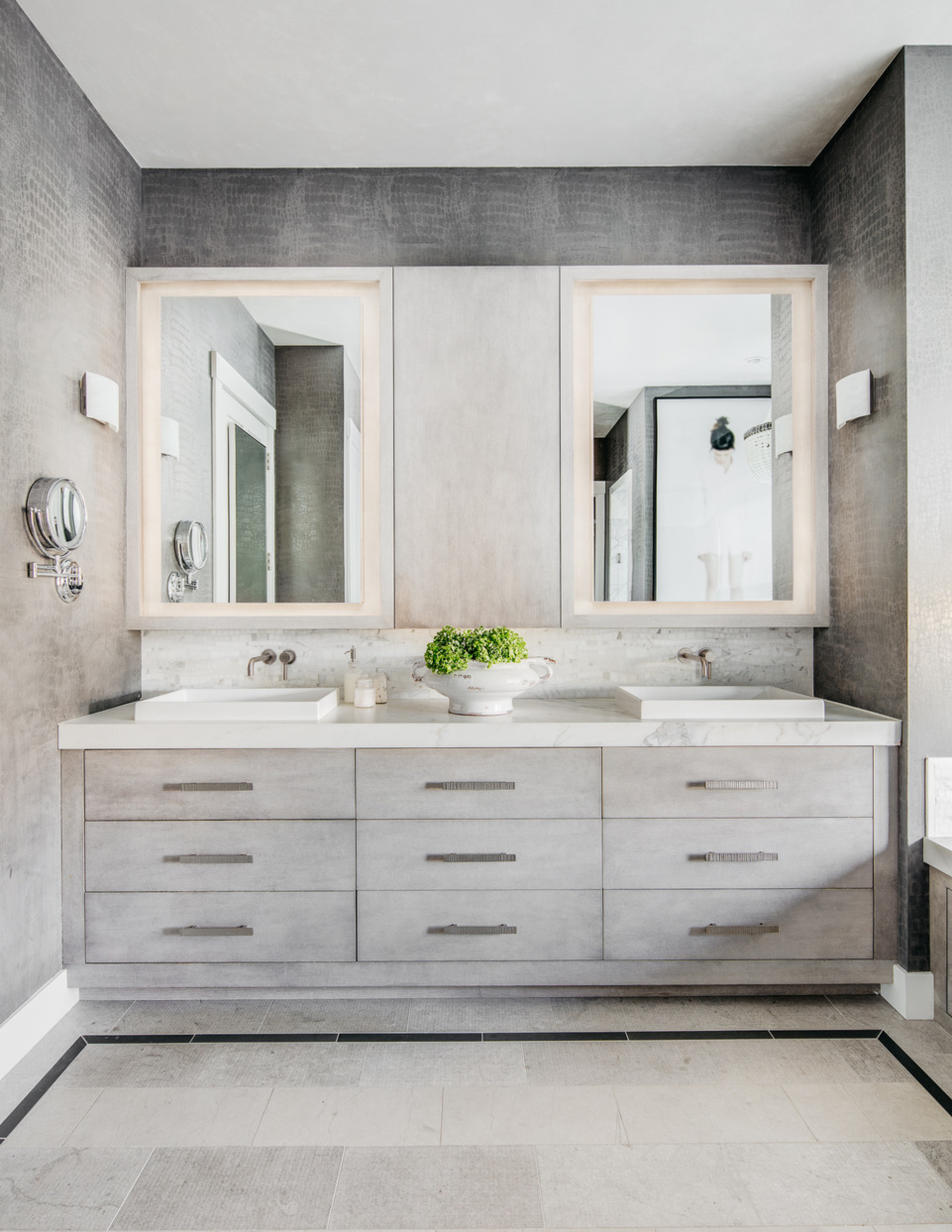
Limestone is a great option for a bathroom floor, and is slightly different to other natural stones in that it is a softer natural mineral. It still makes for a highly durable flooring option and will last a lifetime if properly sealed and maintained, it's also mold and bacteria resistant so great for a bathroom design. 'For the bathroom, we picked a textured limestone inspired by the surrounding nature of the home, giving it a rustic look,' says Holly A Kopman, of Holly A Kopman Interior Design.
'There is slight coloration difference from stone to stone but the overall texture is the same so it keeps the floor feeling consistent. Finally the texture adds a slip resistant finish to the tile.'
What types of floor should you avoid in a bathroom?
Water is a bathroom floor's worst enemy, and there are so many flooring options that cannot compete with this natural element. Carpets can be a really unhygienic option for your bathroom as they can't be cleaned in the same way. Water would also take ages to properly dry in a bathroom given the moisture levels of your average bathroom.
Water is a real issue for hardwood flooring. While it can be suitable for other areas where water is present, like the kitchen, hardwood flooring doesn’t work as an option for a bathroom. 'For it to be suitable, they have to be perfectly installed and perfectly sealed from the moisture, and this is almost impossible,' warns Barrie of BC Bathrooms.
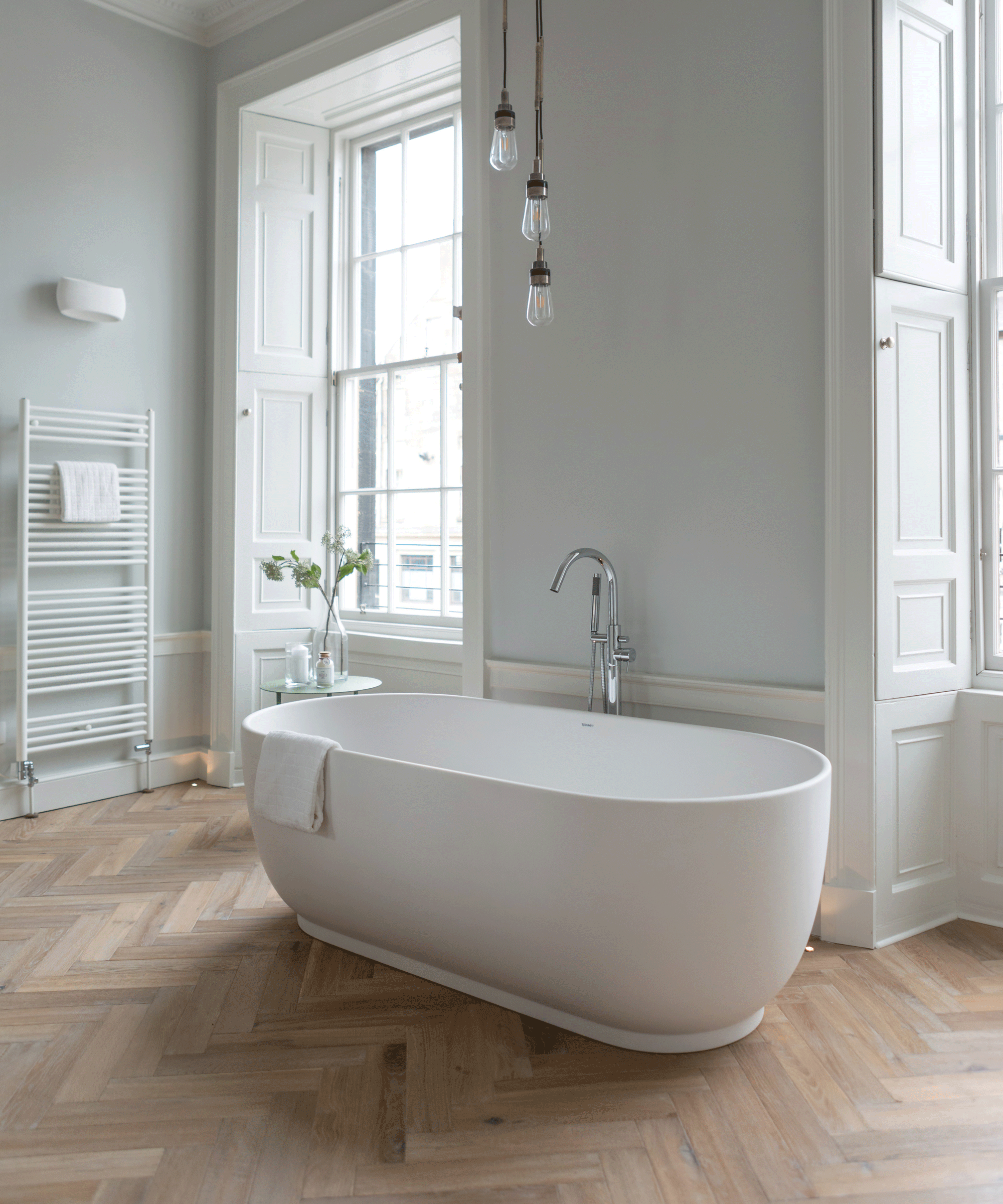
What kind of wood floor can I use in a bathroom?
Engineered wood is a better bathroom floor solution than solid wood mainly for reasons to do with high moisture as engineered wood has a plywood base. If you wish to have wood flooring in a bathroom, engineered wood is the best choice, but wood-effect porcelain or luxury vinyl tiles are still a better option
Laminate flooring is a bathroom floor option that is constructed from thin, pressed wood board with a printed image of wood fused onto a fibreboard core. Laminate flooring is not made from plastic but a collection of wood fibers with a top layer of resin. It is a far better flooring option than hardwood floors, but the priority here is protecting the wood base from moisture by ensuring tight seams between planks to avoid moisture from dropping down. Once this happens, it's tricky to come back from.

Former content editor at Livingetc.com, Oonagh is an expert at spotting the interior trends that are making waves in the design world. She has written a mix of everything from home tours to news, long-form features to design idea pieces, as well as having frequently been featured in the monthly print magazine. She is the go-to for design advice in the home. Previously, she worked on a London property title, producing long-read interiors features, style pages and conducting interviews with a range of famous faces from the UK interiors scene, from Kit Kemp to Robert Kime. In doing so, she has developed a keen interest in London's historical architecture and the city's distinct tastemakers paving the way in the world of interiors.